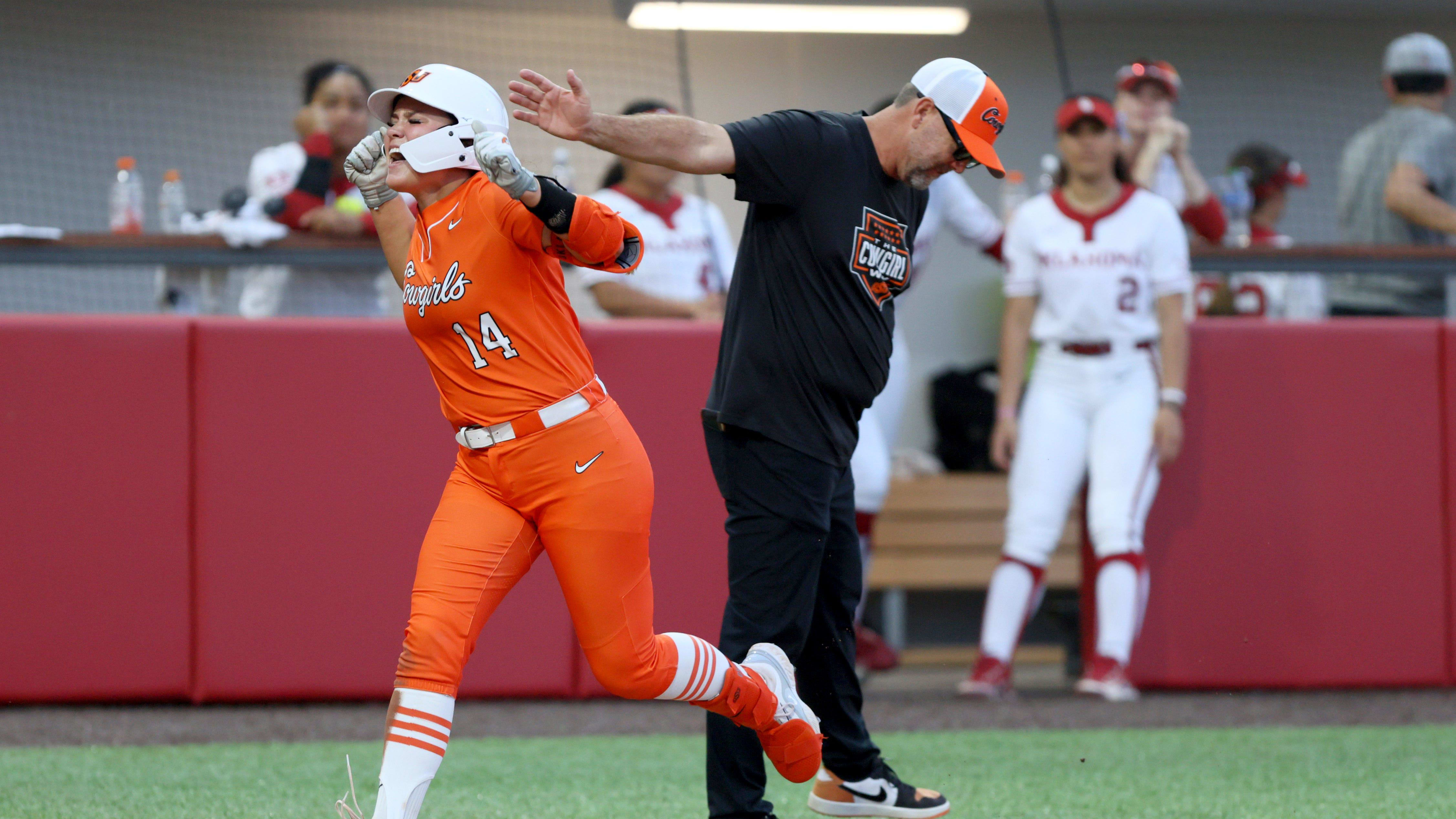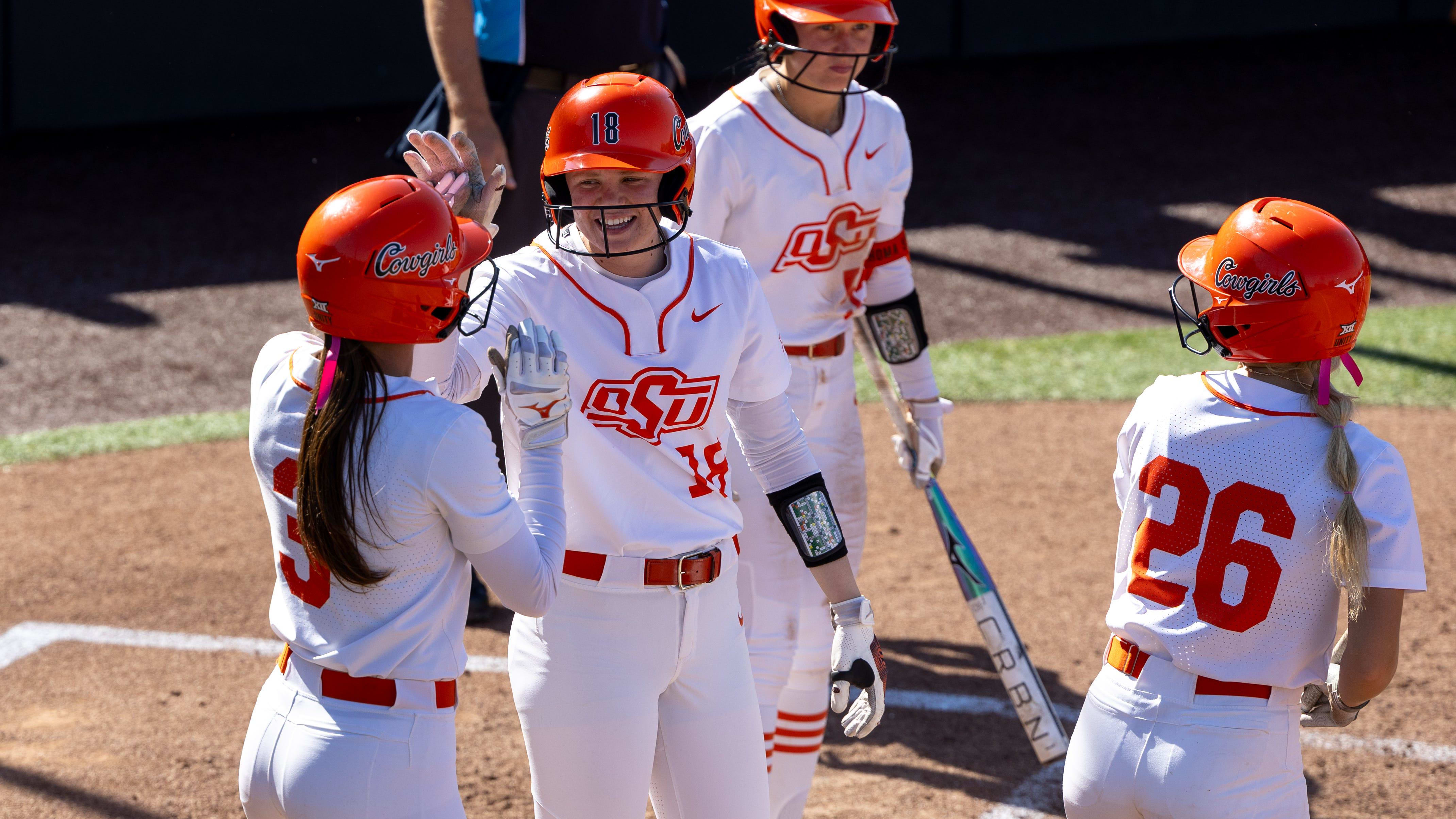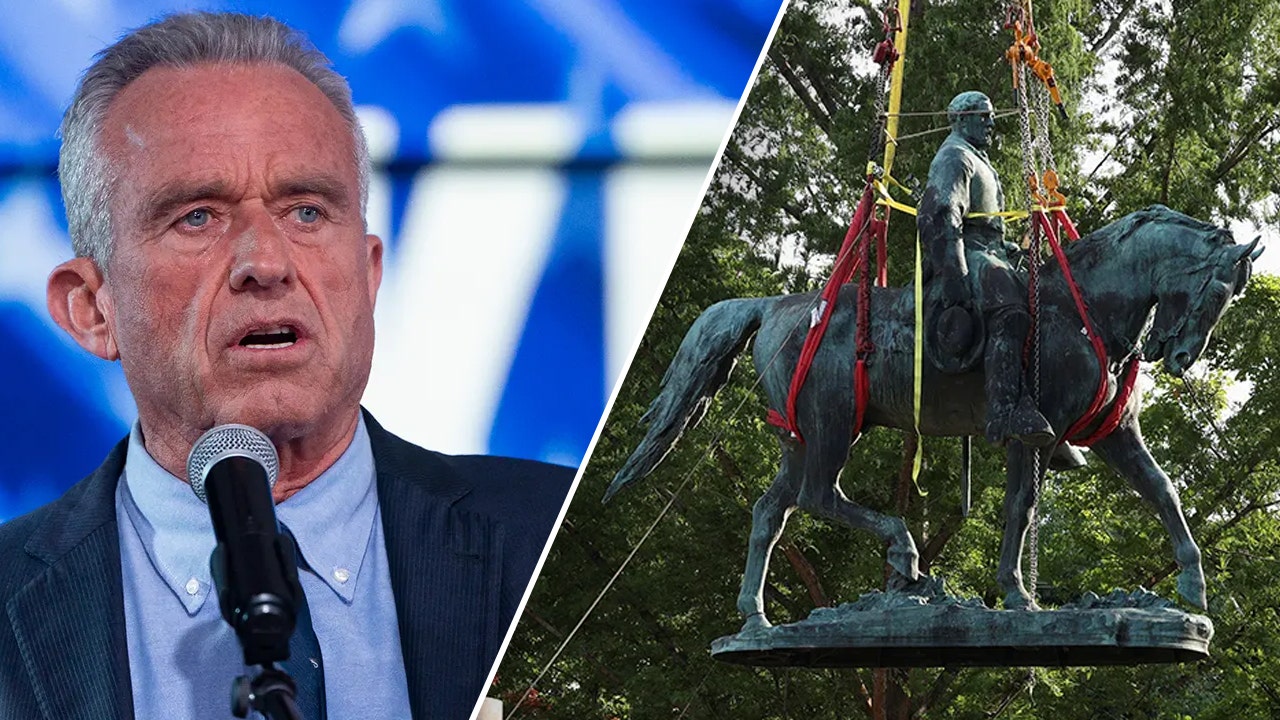Colorado
Colorado, 3 College Football Team Candidates For Big 12 Conference Expansion

As the state of college football continues to figure itself, one of its greatest causes for confusion currently is that of conference expansion. Over the next couple seasons and beyond, we’re likely to see a complete shift in the landscape of the sport through conference realignment. This includes the Big 12, who has already added four teams to their conference for this season.
The move was one of potentially a few for the Big 12 in attempts to replace top tier schools in Oklahoma and Texas, who are parting for the SEC in 2024. With the addition of BYU, Cincinnati, Houston, and UCF, that will give the Big 12 a total of 14 schools this season. However, in hopes of keeping their power school credentials, they’ll want to get back to not only 14, but presumably up to 16 schools similar to the SEC and Big 10, who are adding USC and UCLA to their conference next season.
Here are the likely schools that could join the Big 12:
UConn Huskies
All the football fans reading this are probably shaking their heads. UConn? Really? Remember, it’s not just football. UConn is historically one of the best schools in college athletics, particularly in basketball where the men’s team just won the national championship. With that being said, UConn is apparently on the Big 12’s radar.
There is a belief among certain individuals that Brett Yormark, commissioner of the Big 12, intends to emphasize and reinforce the conference’s basketball appeal. Additionally, there are indications that Yormark also plans to expand the conference’s presence in the northeastern region, particularly targeting the lucrative New York market. UConn appears to fulfill all of these desired criteria.
This is a no brainer for UConn if it were to happen, who is looking for more revenue, even if they would have to pay $30 million in an exit fee to leave the Big East, according to CT Insider. It would also place their football program within an actual conference instead of independently, like they are currently.
Arizona Wildcats
Early in June, there were rumors swirling that two schools could be on their way into the Big 12. Well, Arizona was one of those schools.
The rumor started from a report on the daily sports radio talk show, The Swaim Show.
“Nothing becomes official until the #Pac12 gets their TV deal finalized, but now multiple sources tell us tonight that the #Buffs and #BearDown will move to the #Big12. No word on the #Utes and #SunDevils, but [Big 12 commissioner] Yormark may just take two and save some spots for #ACC teams,” Swaim said.
We’re already in July and the Pac-12 has yet to finalize any sort of television deal, which has to be overly concerning if you’re any of the schools in that conference. The Big 12, however, is just waiting to pounce and poach schools like Arizona and others. This also adds to the emphasis on becoming a strong basketball conference with the Wildcats addition.
Arizona State Sun Devils
The ACC looks to be staying intact — at least for now — after approving a new revenue model based on performance that’s set to take place during the 2024-2025 academic year. So, if Big 12 commissioner Yormark can’t wait for the ACC to implode any further, and the Pac-12 is in shambles, it makes the most sense to go after Arizona State if Arizona is for sure on the board, right? In state rivalry’s are precious commodities in college sports, being one of the many things that makes the sport great. We’ve already had to live without Texas and Texas A&M for a decade, don’t deprive us of the Duel in the Desert as well.
Colorado Buffaloes
Far and away the biggest appeal to the Big 12 currently in their intentions of conference expansion has to be Colorado. That’s certainly not because the Buffaloes have done anything of merit recently, it’s all because of their new head football coach, Deion Sanders.
Since his arrival in Boulder, Coach Prime has brought with him a cavalcade of flair, controversary and most importantly, relevance back to a program in Colorado that had not witnessed anything of the sort in quite some time. It’s why the Pac-12 is probably begging him and the Buffs to stay, hoping his presence alone can help strike the television deal required to keep the conference within the ranks of other Power 5 conferences, or better yet, a working, living conference at all.
Whether Colorado decides to return back to their former conference home in the Big 12 is almost entirely up to Sanders’ appeal and decision. Higher ups at the University of Colorado have to know what they have in him and what money making potential he carries. He’s the true decision maker, no one else.
The crazy part is that bringing in Colorado, believe it or not, brings a sense of legitimacy to the Big 12 in the midst of Texas and Oklahoma’s departure. You couldn’t say that before Sanders’ arrival.

Colorado
New interactive map aims to help visitors enjoy, respect Colorado outdoors

Watch CBS News
Be the first to know
Get browser notifications for breaking news, live events, and exclusive reporting.
Colorado
One-third of Colorado hasn’t tested for toxic “forever chemicals” in their water. Here’s who has.

About one-third of Colorado’s municipalities and counties have not tested for toxic “forever chemicals” in their water supply.
Per- and polyfluoroalkyl substances, or “PFAS,” can cause a host of health issues and CBS News Colorado has reported extensively on their impact and efforts throughout the state and country to limit their presence in drinking water.
About 300 water districts still haven’t started testing for PFAS, although the state says they have until 2026 to start testing, and 2029 to begin implementing solutions.
Additional Information from the Colorado Department of Public Health and Environment:
How many water districts across the state still have not contacted your office and/or even begun testing for PFAS yet?
In Colorado, around 900 public water systems will be required to test for PFAS to comply with the new PFAS rule. To date, we have assisted over 600 public water systems with PFAS testing and will continue these proactive efforts in advance of the new rule’s implementation.
Is your department concerned about the districts who still have not gotten on the ball with this?
The fact that so many have tested is great. Most systems do not have PFAS values that exceed EPA’s new standards. Now that we have a final rule, we will be doing extensive outreach and training to help our water providers understand rule compliance and the benefits of testing early to access available state and federal funding sooner and have more time to implement solutions if needed. We can support water systems that haven’t been tested yet through our PFAS grant program. Our goal is to provide technical and financial assistance to as many public water systems as possible to help them comply with the rule before EPA’s deadline.
I know for some smaller districts it’s going to be really tough to afford the mitigation measures necessary to filter out the PFAS. What supports are available for those districts?
- Most water systems that have tested for PFAS do not have levels above the new standards set by EPA.
- For those with issues, CDPHE developed the PFAS grant program and has assisted almost 30 impacted water systems with pilot testing or installing water treatment, providing emergency assistance for affected communities, and paying for water systems to test for PFAS.
- In 2022 and 2023, we awarded $7.6 million in grant funding to help our communities proactively identify and reduce public exposure to PFAS chemicals.
- In 2024, the department will award another $5-6 million in grant funding. The federal funding sources will provide additional resources to conduct pilot testing or treatment technologies, planning and design grants for treatment, and treatment infrastructure.
- In addition, EPA awarded CDPHE $85 million dollars over two years in the Emerging Contaminants for Small and Disadvantaged Communities Grant program.
- In addition to the Emerging Contaminants grant program mentioned above, federal funding under the Bipartisan Infrastructure Law funding has awarded Colorado $106 million in drinking water revolving and water pollution control funds for 2024. These BIL funds support a range of activities that includes addressing emerging contaminant issues and PFAS-related projects through supplemental funding and State Revolving Fund direct project awards. You can find more information on our website.
Some water districts are having to pass costs on to customers to pay for PFAS mitigation tools. What efforts is the state taking to help minimize that from happening?
As mentioned above, different groups of funds are available to help water systems with PFAS treatment costs.
How long do districts have until enforcement actions can be taken against them for not complying with the new regulations? What will happen to the districts who are not in compliance?
The new rule requires public water systems to test for PFAS beginning in 2026. Water systems must also provide the public with information on the levels of these PFAS in their drinking water. Public water systems have until 2029 to implement solutions (if necessary) to meet the new PFAS standards. After that, CDPHE will issue violations and take enforcement actions as needed to secure public health protection and compliance. CDPHE’s goal is to get ahead of this by utilizing the tools outlined above to help the water systems that need to take action now.
What’s your message to residents who may be concerned about the safety of their water until their district tests and mitigates?
People concerned with possible PFAS levels in their communities can review our dashboard, which displays information about PFAS test results across Colorado.
We have also developed numerous educational materials to help people understand and act on potential PFAS exposure.
If you are concerned about PFAS, you can reduce exposure by using at-home water filters or using an alternate source of water for drinking and cooking.
- While many at-home water filters exist, they haven’t all been certified to remove PFAS. Look for manufacturers that have demonstrated the water filter can remove PFAS to non-detectable levels. Examples to consider include:
- Look for bottled water that has been treated with reverse osmosis. CDPHE cannot verify that all bottled water is below PFAS health advisories. Reverse osmosis is a treatment that removes PFAS, so we suggest choosing a brand that includes this information on the label.
- Treating water with reverse osmosis removes fluoride, and bottled water usually does not contain it. If you choose bottled or treated water, talk to your dentist about other ways to get fluoride to protect oral health.
- Bottled water negatively impacts the environment.
At the end of the day, these districts are having to pay a lot of money to clean up someone else’s mess. Any comment or plans you can provide about future enforcement or regulation changes on facilities, industries, or businesses discharging waste containing PFAS?
We completed our stakeholder engagement effort and are now finalizing our 2024 PFAS Action Plan , which outlines how we will holistically address PFAS contamination moving forward. So far, we have taken many steps towards addressing PFAS contamination.
- The Water Quality Control Commission’s Policy 20-1 adds PFAS testing requirements and discharge limits to permits for facilities that discharge PFAS to lakes and streams.
- We require that any releases of PFOA or PFOS at a facility under a hazardous waste permit or corrective action order be investigated, cleaned up, or otherwise remediated.
- We developed regulations with stakeholders for anyone using firefighting foam containing PFAS to prevent new releases of PFAS in accordance with House Bill 22-1345.
- Our PFAS Takeback Program has taken almost 18 thousand gallons of firefighting foam containing PFAS out of service from our fire departments so we can safely dispose of it and expanded the program to include our commercial service airports.
- We coordinate with the Department of Defense to determine the extent of PFAS contamination and ensure adequate protection of Colorado’s resources and impacted communities. We also support facilities doing voluntary testing and cleanup through our PFAS Grant Program and Voluntary Cleanup and Redevelopment Program.
- The sales and distribution ban on certain products that contain PFAS from House Bill 22-1345 will decrease the public’s exposure to PFAS and lessen the amount of PFAS entering our state’s ecosystem.
Colorado
MATCH PREVIEW: Houston Dynamo FC host Colorado Rapids to wrap up May | Houston Dynamo

HOUSTON (May 28, 2024) – Houston Dynamo FC host the Colorado Rapids on Wednesday, May 29, with kickoff scheduled for 7:30 p.m. CT at Shell Energy Stadium. Houston defeated Colorado earlier this season with a late stoppage time goal from defender Brad Smith. Tickets for the match are available HERE.
Houston enters Wednesday’s match eighth in the Western Conference with a 5-6-3 (WLD) record and 18 points. The Dynamo will look to bounce back from a 2-1 road loss at the LA Galaxy on Saturday. The match saw midfielder Latif Blessing score his first league goal for Houston in the 18th minute in what was his 200th MLS appearance. However, goals from Los Angeles in the 44th and 59th minutes saw the home side take all three points.
Midfielder Jefferson Valverde made his Dynamo debut in the 78th minute at the Galaxy. Houston signed the defensive midfielder on a full transfer from LDU Quito in Ecuador’s top division in late April. Last season, Valverde helped LDU Quito to its 12th league title and second CONMEBOL Copa Sudamericana title.
Notably, captain Héctor Herrera played his first full 90-minute match of the season on Saturday. The Mexican international surpassed 350 minutes of play over seven matches this season as he returns from a knee injury that sidelined him for the start of the season.
Additionally, goalkeeper Andrew Tarbell made his first MLS start on Saturday since Houston’s last trip to the LA Galaxy in September 2023 when he helped the team earn a scoreless draw and Houston’s 12th clean sheet of the season. The veteran goalkeeper is currently playing in relief of Steve Clark, who picked up a face injury earlier this month versus FC Dallas.
Houston continues to boast one of the best defensive records so far this season, despite a shuffling back line that has seen seven players start due to injuries. The team has allowed just 15 goals across 14 matches this season, which is the fewest in the Western Conference and tied for the third fewest across MLS. Additionally, Houston leads the Western Conference with 58.1 percent possession across the season, allowing the Dynamo to control matches and dictate pace of play.
Colorado enters Wednesday’s match sixth in the Western Conference with a 6-5-4 (WLD) record and 22 points. The Rapids are coming off a 3-3 home draw versus Minnesota United FC after facing a 3-1 deficit at halftime. A brace from Kévin Cabral and a Rafael Navarro goal were enough to see the home side split points.
Houston and Colorado met at DICK’s Sporting Goods Park in late March when the Dynamo earned a 1-0 victory with a goal from defender Brad Smith in the final minute of stoppage time. Goalkeeper Steve Clark also made three saves to tally his second consecutive clean sheet at the time.
The Dynamo hold a 7-6-6 (WLD) record over the Rapids at Shell Energy Stadium and will look to add a tally to the win column on Wednesday. In the most recent matchup in Houston in October last season, the Dynamo defeated the Rapids 5-1 with goals from Nelson Quiñónes (brace), Amine Bassi, Corey Baird and Artur.
Before the June international break, the Dynamo travel to face Portland Timbers FC on Saturday, June 1, with kickoff scheduled for 9:30 p.m. CT. Houston defeated Portland 1-0 at home earlier this season.
-

 Movie Reviews1 week ago
Movie Reviews1 week ago‘The Substance’ Review: An Excellent Demi Moore Helps Sustain Coralie Fargeat’s Stylish but Redundant Body Horror
-

 Movie Reviews1 week ago
Movie Reviews1 week ago‘Rumours’ Review: Cate Blanchett and Alicia Vikander Play Clueless World Leaders in Guy Maddin’s Very Funny, Truly Silly Dark Comedy
-

 Culture1 week ago
Culture1 week agoFrom Dairy Daddies to Trash Pandas: How branding creates fans for lower-league baseball teams
-

 News1 week ago
News1 week agoVideo: A Student Protester Facing Disciplinary Action Has ‘No Regrets’
-

 World1 week ago
World1 week agoPanic in Bishkek: Why were Pakistani students attacked in Kyrgyzstan?
-

 Politics1 week ago
Politics1 week agoAnti-Israel agitators interrupt Blinken Senate testimony, hauled out by Capitol police
-

 Politics1 week ago
Politics1 week agoMichael Cohen swore he had nothing derogatory on Trump, his ex-lawyer says – another lie – as testimony ends
-

 News1 week ago
News1 week agoCity of Kyle falls short of ‘Kyle’ world record










:quality(70):focal(1930x1782:1940x1792)/cloudfront-us-east-1.images.arcpublishing.com/shawmedia/NPTYRQJ2LNB7PIDYWAO5L7PVSQ.jpg)









